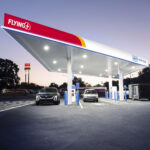The National Renewable Energy Laboratory (NREL) estimates that with the US plug-in electric vehicle fleet expected to expand to 33 million units in the next six years, and to support so many vehicles, the US will need 28 million EV charging ports by 2030.
The two numbers differ because of the definition of an EV charging port: a port provides power to charge only one vehicle at a time, even though it may have multiple connectors. The number of individual connectors might be similar to or higher than the number of vehicles.
The NREL noted in The 2030 National Charging Network: Estimating U.S. Light-Duty Demand for Electric Vehicle Charging Infrastructure report that the vast majority of the charging points will be AC, while DC fast chargers will barely exceed 180,000 units:
- AC (Level 1 and Level 2; up to 19.2 kW): 26.8 million
including 25.7 million private L1/L2 at single family homes, 570,000 private L2 at multifamily homes, 490,000 private L2 at workplaces, and 1,070,000 public L2 at various locations - DC (150 kW or higher; public): 182,000
AC private charging (usually overnight) is the base case scenario for plug-in electric vehicle recharging, as it is convenient and the least expensive form of charging. AC public charging -usually at destination locations like hotels- makes up only a small fraction of the entire infrastructure. DC fast charging is a necessary addition, though it is only used occasionally (aside from special cases and for some fleets).
The expansion of the EV market is always difficult to estimate, but regardless of the exact takeoff rate, it will require significant investments. The NREL hints at a cumulative investment of $53–$127 billion through 2030, with a 52/39/9 share between private, public DC, and public L2 in terms of cost. The publicly accessible charging infrastructure with a 20/80 share between L2 and DC charging ports is estimated to cost $31–$55 billion.

The 2030 National Charging Network, estimating US light-duty demand for the electric vehicle charging infrastructure (source: NREL)
This also shows us how much more expensive public charging infrastructure (especially high-power DC chargers) is compared to simpler private Level 2 AC charging points.








0 Comments